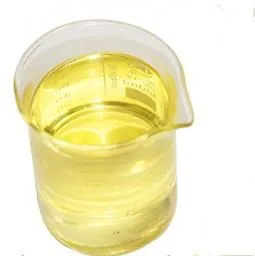- Home
- Products
- Elementary
- Boride Powder
- 3D Printing Powder
- Sulfide Powder
- Oxide Powder
- Carbide powder
- Nitride Powder
- Silicide Powder
- Hydride Powder
- Telluride Powder
- Selenide Powder
- Stearic Acid Series
- Phosphide Powder
- Nanoparticles
- Metal Alloy
- MAX Phase
- Lithium Battery Anode
- Surfactant
- Molecular sieves
- Concrete Admixtures
- Cladding of metals
- News
- Blog
- Contact
- About
Polyglycol Oleate CAS 9004-96-0GML Glycerol monolaurate CAS 142-18-7
Polyglycol Oleate, a nonionic surfactant, has low foam and a good biodegradability.
The following is a list of the most recent articles about Polyglycol Oleate :
Chemical structure and composition
The chemical structure of oleic acid polyethylene glycol ester is composed of oleic acid and polyethylene glycol. Among them, oleic acid is a kind of unsaturated higher fatty acid containing a carbon-carbon double bond and is easy to oxidize. Polyethylene glycol is a high molecular weight alcohol compound with hydrophilic properties. Through esterification, oleic acid is combined with polyethylene glycol to form an amphiphilic molecule that is both hydrophilic and hydrophobic.
Physical property
Oleate polyethylene glycol ester is a light yellow to brownish-yellow viscous liquid with a characteristic odor. Its relative density is usually less than water, insoluble in water but soluble in some common organic solvents. Due to its amphiphilic structure, polyethylene glycol oleate can form a stable emulsion in aqueous solution. In addition, the viscosity of polyethylene glycol oleate is higher, related to temperature and molecular weight.
Chemical property
The chemical properties of polyethylene glycol oleate are mainly related to its composition. Due to the unsaturated double bond, polyethylene glycol oleate can easily oxidize and polymerize. Under light, oxygen, metal ions, etc., oleate polyethylene glycol ester can easily undergo oxidation deterioration, resulting in deepening color, increasing viscosity, and eventually losing its use value. Therefore, appropriate measures must be taken to avoid these unfavorable conditions during use and storage.
Stability and storage
Due to its amphiphilic structure, polyethylene glycol oleate is stable in aqueous solution. However, in long-term storage or under adverse conditions (such as high temperature, light, oxygen, etc.), the stability of polyethylene glycol oleate may be affected. To maintain its stability, it is usually recommended to store it in a cool, dry, light-free environment and avoid contact with air, metal ions, etc.
Biocompatibility and safety
Polyethylene glycol oleate is a synthetic compound, and its biocompatibility and safety need to be evaluated based on specific application scenarios and uses. In some applications, such as drug delivery and tissue engineering, the biocompatibility and safety of polyethylene glycol oleate are key factors. Detailed biological assessments and safety testing are required in these cases to ensure it does not adversely affect the organism.

Technical Parameter
Polyglycol oleate
| Product Name | Short name | HLB | Appearance |
| Polyglycol Oleate | N/A | N/A | Yellow to pale yellow oily material |
Applications of Polyglycol oleate:
Cosmetics and daily chemical products
In cosmetics and daily chemical products, polyethylene glycol oleate is widely used as the main ingredient or additive. Due to its amphiphilic structure, polyethylene glycol oleate can form a stable emulsion and is used as an emulsifier, wetting agent and dispersant. In addition, it is also used in the formulation of lipstick, eyeshadow and other makeup products to improve the persistence and adhesion of color.
Food industry
In the food industry, oleate polyethylene glycol ester is used as a food additive, mainly emulsification and thickening. It can improve the stability of food, prevent the separation of oil and water, and improve the taste and texture of food. In addition, oleate polyethylene glycol ester is also used as an emulsifier in vegetable protein drinks, sauces, salad dressings, and other foods.
Medical field
In medicine, polyethylene glycol oleate is mainly used as a material for drug carriers and drug delivery systems. Due to its amphiphilic structure, polyethylene glycol oleate can be well combined with drugs to form stable drug carriers, thereby improving drug solubility, stability and bioavailability. For example, in liposome drugs, polyethylene glycol oleate is used as a membrane material for the preparation of liposomes, and through controlling the particle size and stability, the directed delivery and controlled release of drugs is achieved. In addition, polyethylene glycol oleate can also be used as an emulsifier for injection emulsions to improve the stability and safety of drugs.
Agriculture and plant protection
In the agricultural field, polyethylene glycol oleate can be used in the formulation of pesticides as an emulsifier and wetting agent to improve the dispersion and stability of pesticides. It can promote the wetting and penetration of pesticides on the surface of plants to improve the control effect of pesticides. In addition, oleate polyethylene glycol ester can also be used as a carrier of plant growth regulators to promote plant growth and development. In plant protection products, oleate polyethylene glycol ester helps improve the performance and effect of products, reducing pesticide use and environmental pollution.
Production Method of Polyglycol oleate:
Shipping & Packing of Polyglycol oleate :
Polyglycol Oleate is available in a variety of different packaging options.
Packing: 1kg/bottle; 25kg/barrel or 200kg/barrel.
Polyglycol Oleate shipping could send out by air, sea, or express as soon after payment receipt.
Polyglycol oleate Properties:
| Alternative Names | PEG-n oleate; polyoxyethylene monooleate |
| CAS Number | 9004-96-0 |
| Compound Formula | C18H35COO(CH2CH2O)nH |
| Molecular Mass | N/A |
| Appearance | Yellow to pale yellow oily material |
| Melting Point | N/A |
| Boiling Point | N/A |
| Density | N/A |
| Solubility In H2O | N/A |
| Exact Volume | N/A |
| Safety and Health Information about Polyglycol Oleate | |
| Sign Word | N/A |
| Hazard Statements | N/A |
| Hazard Codes | N/A |
| Risk Codes | N/A |
| Safety Declarations | N/A |
| Transport Information | N/A |
Inquiry us
PREVIOUS Surfactant
Polyglyceryl -3 stearate CAS 27321-72-8;26855-43-6;67784-82-1
NEXT Surfactant